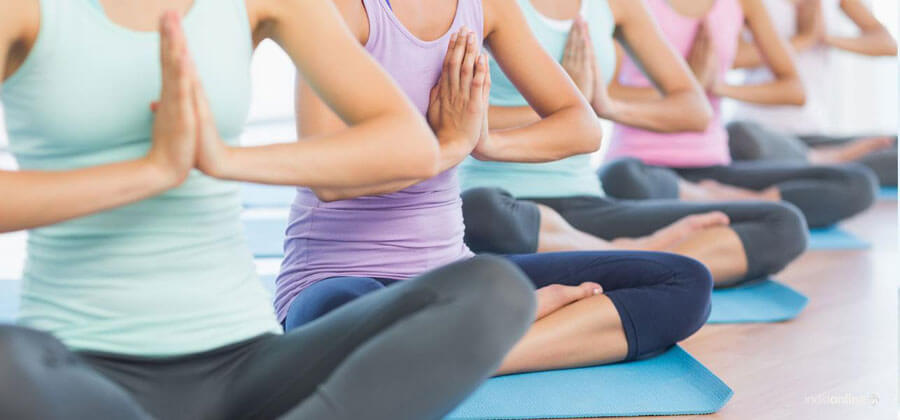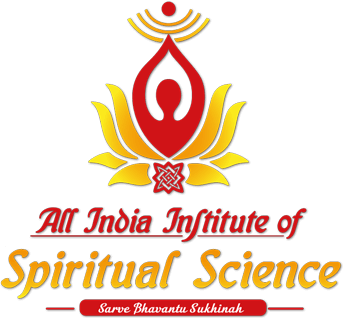“Yoga is the journey of the self, through the self, to the self.”
–The Bhagavad Gita

Introduction: Yoga is essentially a spiritual discipline based on an extremely subtle science, which focuses on bringing harmony between mind and body. It is an art and science of healthy living. The word ‘Yoga’ is derived from the Sanskrit root ‘Yuj’, meaning ‘to join’ or ‘to yoke’ or ‘to unite’. As per Yogic scriptures the practice of Yoga leads to the union of individual consciousness with
that of the Universal Consciousness, indicating a perfect harmony between the Mind and Body, Man and Nature. According to modern scientists, everything in the universe is just a manifestation
of the same quantum firmament.
One who experiences this oneness of existence is said to be in yoga, and is termed as a Yogi, having attained to a state of freedom referred to as Mukti, Nirvana or Moksha. Thus, the aim of Yoga is Self-realization, to overcome all kinds of sufferings leading to ‘the state of liberation’ (Moksha) or ‘freedom’ (Kaivalya). Living with freedom in all walks of life, health and harmony shall be the main objectives of Yoga practice. “Yoga” also refers to an inner science comprising of a variety of methods through which human beings can realize this union and achieve mastery over their destiny. Yoga, being widely considered as an ‘immortal cultural outcome’ of Indus Saraswati Valley civilization – dating back to 2700 B.C., has proved itself catering to both material and spiritual upliftment of humanity. Basic humane values are the very identity of Yoga Sadhana.
“The attitude of gratitude is the highest yoga.” – Yogi Bhajan
The Fundamentals of Yoga Sadhana: Yoga works on the level of one’s body, mind, emotion and energy. This has given rise to four broad classifications of Yoga: Karma Yoga, where we utilize the body; Bhakti Yoga, where we utilize the emotions; Gyana Yoga, where we utilize the mind and intellect; and Kriya yoga, where we utilize the energy. Each system of Yoga we practice would fall within the gamut of one or more of these categories. Every individual is a unique combination of these four factors. “All the ancient commentaries on Yoga have stressed that it is essential to work
under the direction of a Guru.” The reason being that only a Guru can mix the appropriate combination of the four fundamental paths, as is necessary for each seeker.
Yoga Education: Traditionally, Yoga Education was imparted by knowledgeable, experienced, and wise persons in the families (comparable with the education imparted in convents in the west) and then by the Seers (Rishis, Munis, Acharyas) in Ashramas (compared with monasteries). Yoga Education, on the other hand, aims at taking care of the individual, the ‘Being’. It is presumed that a good, balanced, integrated, truthful, clean, transparent person will be more useful to oneself, family, society, nation, nature and humanity at large. Yoga education is ‘Being oriented’. Details of working with ‘being oriented’ aspect have been outlined in various living traditions and texts and the method contributing to this important field is known as ‘Yoga’. Yoga Sadhana of all hues and colors is considered panacea for a meaningful life and living. Its orientation to a comprehensive health, both individual and social, makes it a worthy practice for the people of all religions, races and nationalities.

All Indian Institute of Spiritual Science’s aim is to teach not just the practical application of yoga but teach you about the theoretical basis behind this physical, mental , and spiritual discipline. Ancient yogis believed that in order for man to be in harmony with himself and his environment, he has to integrate the body, the mind, and the spirit. For these three to be integrated his emotion, action, and intelligence must be in balance. The yogis formulated a way to achieve and maintain this balance and it is done through exercise, breathing and meditation.
In yoga, the body is treated with care and respect. Exercises improve circulation, stimulate the abdominal organs and work on the body’s glandular system all resulting in better health. With daily physical tuition, the theoretical classes, posture correction, pranayama, and meditation sessions along with a freshly prepared wholesome vegetarian yogic diet, you will leave the retreat not only with a better knowledge of yoga but also rejuvenated, refreshed and energized both physically and mentally.
“Through sustained focus and meditation on our patterns, habits, and conditioning, we gain knowledge and understanding of our past and how we can change the patterns that aren’t serving us to live more freely and fully.” –
Yoga Sutra III.18
This 14 day yoga retreat in Himachal Pradesh is all about you – reaching the full potential of your life. It’s about letting go of fear, fatigue, frustration, healing old wounds, finding purpose, refining your practice and learning new skills so that you can live a more joyous, loving, compassionate and remarkable life. You will connect consciously to the elements through various Ancient practices of Yoga, breathing, ceremony, and healing. Throughout the retreat always be reminded of building the cultivation of Self-love.
Your practice is your foundation, your real teacher. In the training, you will commit to daily practicing asana, pranayama, kriyas, mantras, meditation, and various relaxation techniques. Your practice will allow you to experience the effects on your body and mind. What you experience, you will understand. What you understand, you will be able to share with others.
You’ll practice asana, pranayama techniques, and different meditations 6-8 hours every day. Since AIISS training is demanding and challenging physically and mentally, we find it important to have a good balance between more dynamic physical practice and classes to restore and rejuvenate. During the training you will explore the asanas of Hatha, Vinyasa, and Ashtanga Yoga.
A variation of different pranayama techniques is integrated into your daily practice. Consequently, you will become familiar with key verbal instructions, function, benefits and contraindications of the most important pranayama’s. At the end of the program you will have integrated these practices and, thus, will be able to incorporate pranayama into your teaching, as well.
Meditation is a very important element of AIISS trainings. In this 14-day training you’ll develop an understanding of what meditation is and how it helps to gain insight into ourselves and our relationship with the world. You will be introduced to meditation techniques like silent sitting, movement meditations, heart meditations, and Buddhist meditations. Also, every student can choose to have a day in silence. This day you will receive teachings and practices silently, allowing yourself to observe your beliefs and thoughts more closely.
Teaching is a great medium to learn about yourself and others. Therefore, you will be asked to work with the other students, in groups, on teaching assignments from the very beginning. Our teachers will give you practical tools and constructive feedback that will help you grow rapidly and confidently. The Art of Teaching classes are a great platform where you can integrate what you have learned in the alignment, anatomy and philosophy classes. Above all you will be invited and challenged to find your unique way of teaching a class.
You will have a daily alignment class, in which you learn the most important asana postures addressing their alignment. These classes include Sanskrit and English names, key verbal cues, function of the postures, basic hands-on adjustments, benefits and contraindications. All types of asana are covered: standing, standing balancing, sitting poses (forward bends and twists) forward bends, supine, back bending, core awakening, arm balance and inversions.
Proper understanding of anatomy is crucial for a yoga (asana) teacher. During this course you will study the functional applied anatomy of the major joints (knee joint, hip joint, shoulder joint, and spine), digestive, respiratory, endocrine, immune system, fundamental bones and basic muscles throughout the course. This will help you to understand and identify differences in students and corresponding needs.
You will be introduced to chanting mantras in a more classical setting (start/end of the class) as well as a more joyous setting in a kirtan evening. You will be chanting some of the most important mantras and understand by experience how sound can positively charge oneself and the environment.
Spiritual, yogic and healing hand gestures. In Hatha yoga, mudras are used in conjunction with pranayama. Unlike older tantric mudras, hatha yogic mudras are generally internal actions, involving the pelvic floor, diaphragm, throat, eyes, tongue, anus, genitals, abdomen, and other parts of the body. This course includes hatha and tantra hand mudras.
You will gain insight into the evolution of yoga from the Vedic to these modern times. We guide you in how to apply yoga philosophy in your yoga practice, your teachings, and most importantly, in your everyday life. The Yoga Sutras of Patanjali with a particular focus on the 8 limbs of yoga, and Bhagavad Gita, will be studied in depth.
Our unique 14 days Intensive Yoga Retreat in Himachal Pradesh is based on traditional knowledge of Hatha yoga, Vinyasa, Ashtanga Yoga, and meditation and incorporates modern science and the latest understandings in the fields of Yoga and Ayurvedic medicine. These teachings, when understood on even the most basic level, will have a transformational effect on your daily life. Our
instruction is designed in a practical way that will allow you to continue to practice after completing the retreat. The retreat program is an opportunity for all those who are seeking a connection to their inner selves and All India Institute of Spiritual Science assures that on this journey of self-discovery, one will take away with them an experience of lifetime from the holy land of Himachal Pradesh.


Our Ashram is inspired by the pilgrimage powers and is located in the Himalaya Mountains (Jia Village, District Palampur, Himachal Pradesh). We welcome you heartily!